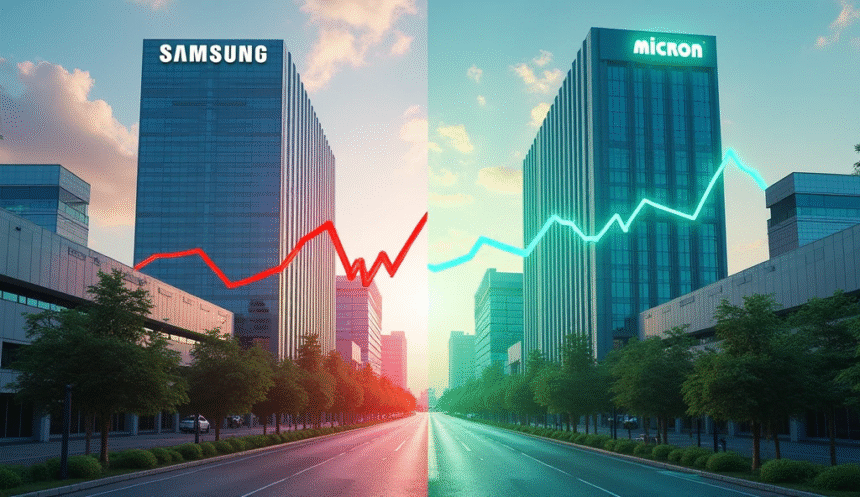In a major shakeup within the semiconductor industry, Samsung the world’s largest memory chip maker is facing critical delays in delivering its next-generation AI chips to Nvidia. These setbacks have opened the door for U.S.-based Micron Technology to step into the spotlight, capturing market share and investor confidence in one of the most competitive tech races of 2025. As AI demand skyrockets, especially for high-bandwidth memory (HBM), this chip crisis is setting the stage for a global power shift in the semiconductor space.
Samsung’s Delay: What Happened?
Samsung’s high-bandwidth memory (HBM) chips vital for powering AI workloads on Nvidia GPUs failed to meet key energy efficiency and heat resistance tests. As a result, Samsung missed qualification to ship HBM3E chips to Nvidia, putting it behind schedule while AI chip demand reaches all-time highs
In its July 2025 Q2 earnings guidance, Samsung warned investors of a 56% drop in operating profits, with memory division performance dragging the numbers down.
Micron Steps In
With Samsung temporarily out of the AI memory race, Micron Technology, the Boise-based U.S. company, is now becoming the go-to supplier for HBM chips. Analysts predict Micron could grab 20–25% of global AI memory share by the end of 2025, with orders completely booked through 2025.
Micron’s chips have already passed Nvidia’s qualification tests and are being integrated into next-gen GPUs and AI servers globally. This success also sent Micron’s stock price soaring as investors shifted confidence from Asia to American manufacturing.
What This Means for the Global Chip Race
The rivalry between Samsung, SK Hynix, and Micron is at the core of the AI infrastructure boom. With OpenAI, Google, Meta, and Amazon all pushing boundaries with LLMs and AI-driven tools, access to fast and efficient memory is gold.
Micron’s sudden rise could rebalance industry dynamics:
- U.S. chipmaking resurgence after years of Asian dominance.
- Greater diversification for Nvidia, AMD, and Qualcomm.
- More government support for Micron and other U.S. chip firms through the CHIPS Act.
What to Watch Next
- Will Samsung resolve its technical challenges in time to compete by Q4?
- Can Micron maintain production capacity under such high demand?
- How will Nvidia handle supply diversification between Micron, Hynix, and (possibly) Intel?
The coming months will be crucial not just for the companies involved, but for the future of AI development itself.








